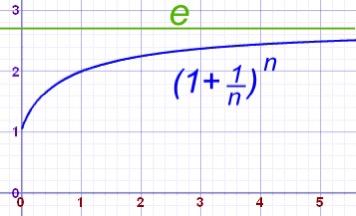Eternal bonds of love between the characters are not found only in plays of Shakespeare or literature but these are profound in mathematical functions. I am presenting this mathematical affinity amongst Natural number e, Mathematical constant pi, Tangent and logarithm of a quantity and a bit more. I will be using power series expansion, calculus and complex numbers. These mathematical functions also exhibit strong bonds for each other. I submit wherever there is a logarithm of a quantity, presence of natural number can not be denied. Wherever a natural number comes into being, mathematical constant pi appears from oblivion.Tangent of the quantity is also not far behind, it is hidden in the logarithm as the baby concealed in belly pouch of its mother Kangaroo. The efflorescence in which these quantities are born from each other urges me to state that there is some unseen eternal bonds between these. Cosmic cycles will revolve but there bonds not diminishing even by an iota.
Introduction
Before I proceed further let there be brief introduction. For tangent, I refer you to triangle ABC with right angle at corner B, base AB, perpendicular BC and hypotenuse CA that
makes an angle x radians at A. Ratio of perpendicular to base ie BC/AB is the tangent of angle x.
Graph Of Tan Inverse x and Cot inverse x.
If value of tangent of an angle is given, angle can be determined by taking inverse of tangent.
Natural number abbreviated as e* is defined as (1+ 1/n) multiplied with itself infinite times where n tends to infinity.
Mathematically, it is written as
e = (1 + 1/n)^n where n tends to infinity and sign ^ denotes raised to power. Numerically,
e = 1+ 1 + ½! + 1/3! + ¼! + 1/5! +….up to Infinity. And this sums up as 2.71828.
Image of circle showing Pi as ratio of circumference to diameter, Courtesy author Klonjee.
Pi**abbreviated as π is defined as ratio of circumference of a circle to its diameter. Numerically, it equals 3.14159.
Logarithm*** of a quantity is that power of natural number which equals the quantity. If the quantity is e^x then natural logarithm is x.
Graph of function of logarithm courtesy Krisnavedala
Theory And Proof
Having introduced these quantities, I take up function
F(x) = 1/(1+ x^2)
= (1+ x^2)^-1.
Above function can be expanded as binomial expansion,
F(x) = (1+ x^2)^-1 = 1- x^2 + x^4 – x^6 + x^8- …………..
On integrating above function with respect to x, we get
tan inverse x =c + x – (x^3)/3 + (x^5)/5– (x^7)+ x^8- ………up to Infinity
where c is a constant of proportionality.
If x is 0, then tan inverse is either zero or is integral multiple of pi and is written as k.pi. On putting x equal to zero, right hand side of above equation becomes c.
That is c equals k.pi where k is any number 0,1,2, 3 ……. Substituting this value of c in above equation, we get
tan inverse x = k.pi + x – (x^3)/3 + (x^5)/5– (x^7)+ x^8- …………..
Taking principal value by putting k equal to zero, value of c also equals 0. The equation then can be rewritten as
tan inverse x = x – (x^3)/3 + (x^5)/5– (x^7)+ x^8- ….up to Infinity (1)
Now we take another function and will try to make it equal to tan inverse x expansion. Let this be
f(x) = 1/(1- x^2).
It is obvious from this function that when x would be substituted by i x this function will be indistinguishable from 1/(1+ x^2) which is derivative of tan inverse x. On integration with respect to x, this will result in tan inverse x and 1/(1- x^2) on integration will yield logarithmic function in x. These on substitution with x as i x will have close relations.
Based on this theory, let us decompose this function into partial fraction as
f(x) = 1/(1- x^2) = 1/(1+ x).(1-x) = A/(1+ x) + B/(1- x).
Or 1 = B.(1+ x) + A.(1- x).
On comparing constant term and coefficient of x of left hand side LHS with right hand side RHS, we get
A = ½ = B.
Then fx) = 1/(1- x^2) = (1/2)/(1+ x) + (1/2)/(1- x).
However 1/(1- x^2) can be expanded according to Binomial Theorem as
1/(1- x^2) = 1+ x^2 + x^4 + x^6 + x^8- …………..up to infinity.
Therefore,
F(x) = 1/(1- x^2) = (1/2)/(1+ x) + (1/2)/(1- x) =1+ x^2 + x^4 +x^6 + x^8+ …………..up to Infinity.
On integrating with respect to x, we get
½. log (1+ x) – ½.log (1-x) = c1+ x + (x^3)/3 + (x^5)/5 +(x^7)/7 + (x^9)/9+ …………..up to infinity
where c1 is constant of proportionality.
At x = 0, 0 = c1.
Therefore,
½. log (1+ x) – ½.log (1-x) = x + (x^3)/3 + (x^5)/5 +(x^7)/7 + (x^9)/9+ …………..up to infinity.
Or ½.log (1+x)/(1-x) = x + (x^3)/3 + (x^5)/5 +(x^7)/7 + (x^9)/9+ ………….. up to infinity (2)
On putting x as i x in equation (1), it transforms to
tan inverse ix = ix + i(x^3)/3 + i(x^5)/5+ i(x^7)+ ix^8- ….up to Infinity.
Or (1/i) tan inverse ix = x + (x^3)/3 + (x^5)/5+ (x^7)+ x^8- ….up to Infinity………………………………………………………. (2/1)
This equation is same as equation (2), therefore equating these two we get,
1/i. tan inverse ix = ½.log (1+x)/(1-x) or
tan inverse ix = ½.i.log (1+x)/(1-x) (3)
Let (1+x)/(1-x) = z, then x = (z-1)/(z+1) and
½.i log z = tan inverse i.(z- 1)/(1+z) (4)
It is explicit from above, wherever the term logarithm of a quantity comes, tan inverse is a part and parcel of it and is given by above equations. Logarithm as it was defined earlier denotes the power of natural number e that makes it equal to given quantity and for tangent, that power points to an angle the tangent makes so as to equal the quantity. It is submitted, in other words, logarithm of a quantity is joint to the angle that the tangent makes, by an unbreakable bond. The bond is stated in relations as defined by equations (3) and (4).
If x is substituted by – i in equation (3), it takes the form
tan inverse 1 = ½. i.log (1-i)/(1+ i) or
k pi + pi/4 = ½. i.log {(1-i)(1+i)}/{1+ i)(1+i)}
= ½. i.log 2/2i = ½. i.log1/i = -1/2.i log i where i is (-1)^1/2 and k is any number 0, 1, 2, 3………….
Taking principal value by putting k = 0,
pi/4 = – ½.i log i or
– pi/2 = i. log i (5)
That means logarithm of pure imaginary number multiplied by itself that is, pure imaginary number always equals minus half pi. Imaginary number i that equals (-1)^1/2 is impractical and unachievable but when its logarithm is multiplied with imaginary number, gives result as minus half pi. This again is un breakable bond between pi and logarithm of imaginary number.
If we combine equations (3) with (5), it transforms to
tan inverse ix – pi/4 = 1/2.i log (1+x)/(1-x) + ½ i log i
= ½.i log i.(1+x)/(1- x). (6)
Again this is an equation where logarithm, tangent, pi and natural number are all all connected with each other.
We revert to equation (5),
-pi/2 = log i^i
e^-pi/2 = i^i (7).
This is another equation which joins natural number e with mathematical constant pi through imaginary number iota i.
Again coming to equation (3), tan inverse ix = ½.i.log (1+x)/(1-x), by rearranging I can write this as
Tan [½.i.log (1+x)/(1-x)] = i x.
From this, I can get
sec [½.i.log (1+x)/(1-x)] = [1+ tan^2 {1/2i.log (1+x)/(1-x)}]^1/2
= (1- x^2)^1/2.
By its reciprocal, value of cosine can be found as
Cos [½.i.log (1+x)/(1-x)] = (1- x^2)^-1/2.
This can also be written as
Cosh [½.log (1+x)/(1-x)] = (1- x^2)^-1/2.
Similarly value of sinh can also be found out as
Sinh ½.i.log (1+x)/(1-x)] = x/(1- x^2)^1/2
If Cosh [½.log (1+x)/(1-x)] = (1- x^2)^-1/2 is integrated with variable x from range 0 to 1, it equals sin inverse x with range 0 to 1 and that equals pi/4. Or
Integral Cosh [½.log (1+x)/(1-x)] range 0 to 1 = integral (1- x^2)^-1/2 range 0 to 1 = sin inverse x range 0 to 1 = pi/2. Logarithm of (1+x)/(1-x) is also connected by equation
Integral Cosh [½.log (1+x)/(1-x)] range 0 to 1 = pi/2
Conclusions
Natural Number, Pi, Tangent And Logarithm Of A Quantity are all connected with each other as has been proved from equations,
tan inverse ix = ½.i.log (1+x)/(1- x) (3)
½.i log z = tan inverse i.(z- 1)/(1+z) (4)
k pi + pi/4 = -1/2.i log i
where i is (-1)^1/2 and k is any number 0, 1, 2, 3………….
and for principal value on putting k = 0,
– pi/2 = i. log i (5)
tan inverse ix – pi/4= ½.i log i.(1+x)/(1- x) (6).
e^-pi/2 = i^I, (7)
sin [½.i.log (1+x)/(1-x)] = (1- x^2)^-1/2,
cos ½.i.log (1+x)/(1-x)] = x/(1- x^2)^1/2 and
cosh ½.log (1+x)/(1-x)] = x/(1- x^2)^1/2.
These bonds are not affected by physical matters as unfortunately human bonds are. Their relationships are intrinsic present and will last till eternity. Nothing in the universe can break these.
Keywords: Natural Number, Logarithm, Tangent, Pi, Eternal Bond, Binomial Expansion, Integration, Imaginary Number Iota, Tangent Inverse, Complex Number.
References:
1) Graph of tan Inverse x courtesy Geek3 at https://en.m.wikipedia.org/wiki/Inverse_trigonometric_functions
2) Graph of natural number courtesy http://www.mathsisfun.com/numbers/e-eulers-number.html
3) Image of circle showing Pi as ratio of circumference to diameter by author Kjoonlee at https://en.m.wikipedia.org/wiki/Pi
4) Graph of function of logarithm courtesy Krisnavedala at https://en.m.wikipedia.org/wiki/Logarithm
5) * Natural number details can be read at https://narinderkw.wordpress.com/2017/07/05/natural-number-is-not-much-natural/
6) ** Pi details can be read at https://narinderkw.wordpress.com/2017/04/10/pi-is-sweeter-than-pie/
7) *** Logarithm details can be read at https://narinderkw.wordpress.com/2017/06/16/goodbye-to-log-table-and-calculator-determining-logarithm-is-easy-now/
8. Title Image English: Sunrise over the bay, Little Gasparilla Island, Florida, Source courtesy Author Mmacbeth at https://commons.m.wikimedia.org/wiki/File:Little_Gasparilla_sunrise.jpg#mw-jump-to-license
End.
About Author
Writer is an Electronics and Electrical Communication Engineering graduate and was earlier Scientist, then Instrument Maintenance Engineer, then Civil Servant in Indian Administrative Service (IAS). After retirement, he writes on subjects, Astronomy, Mathematics, Yoga, Humanity etc.







I can leave no higher compliment than once again in reading your blog, I learned something!
LikeLike
Thanks for going through and liking it, sir. Regards,
LikeLike